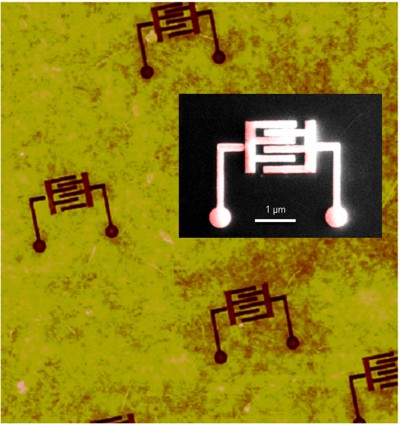Monash tips hat to Moore in supercapacitor studies
 Monash engineers have reported on their successful miniaturisation of supercapacitors – an important step in the constant advance of batteries and power technology.
Monash engineers have reported on their successful miniaturisation of supercapacitors – an important step in the constant advance of batteries and power technology.
The miniaturisation of supercapacitors will enable devices to hold much more energy in the same or less volume, have higher peak power, be fully recharged in minutes and last much longer than current battery technologies.
The market for supercapacitors (estimated at US$5 billion with 20 per cent growth per annum) is predominantly in consumer electronics, but there are new applications in transport, construction, medicine, food, defence and other sectors popping up all the time.
This means that ground-breaking research such as the achievements at Monash has the potential to transform markets across almost any sector.
Associate Professor Mainak Majumder links the research at Monash University’s Nanoscale Science and Engineering Laboratory to Moore’s law.
“Fifty years ago, Moore wrote that every two years transistor density in circuits would double. Today we see a world ever more reliant on electronics shrinking in size and increasing in power,” he said.
“Traditionally supercapacitor efficiency was limited by the large distance ions have to travel between sheets of porous carbon.
“By using micro technology we have placed the positive and negative electrodes in one plane separated by a much smaller distance.
“Here we have shown that when the size of the electrodes becomes smaller, the amount of energy and power these supercapacitors can deliver per unit volume becomes exceedingly large,” Professor Majumder said.
Dr Parama Chakraborty-Banerjee, the lead electrochemist behind the studies said, “the unprecedented performance of these micro-supercapacitors has strengthened our theoretical understanding and comprehensively proved that miniaturisation of super-capacitors whereby edge effects are maximised represents the most promising evolution of this technology.”
“We are able to fabricate supercapacitors smaller than the diameter of human hair, with exceptionally high energy and power densities,” said Derrek Lobo, the graduate student who fabricated the devices.
“We undertook relentless experiments for over two years in the face of doubts raised by established groups.”
The latest Monash research paper is accessible here.
The efforts were made possible by an ARC Linkage grant that allowed Monash to work with an industry partner, Ionic Industries, to paving the way for Australian ‘smart manufacturing’ and intellectual property utilising graphene.
Ionic Industries is a spin-off from Strategic Energy Resources (ASX: SER).
“This vindicates our decision to back Monash on this exciting research and our confidence that the research will have real-world commercial applications,” said Ionic Industries CEO Mark Muzzin.
“We are now planning to accelerate our efforts to produce prototype devices for demonstrating this technology.”







 Print
Print